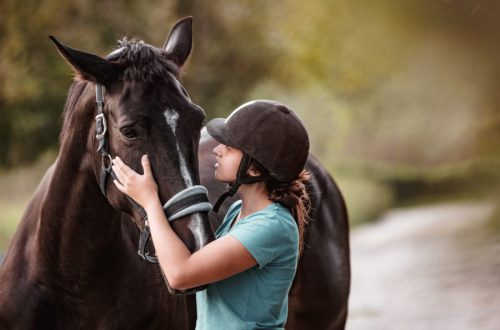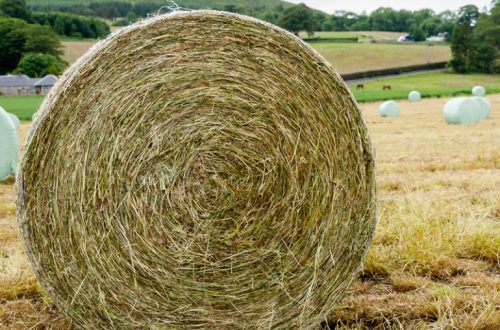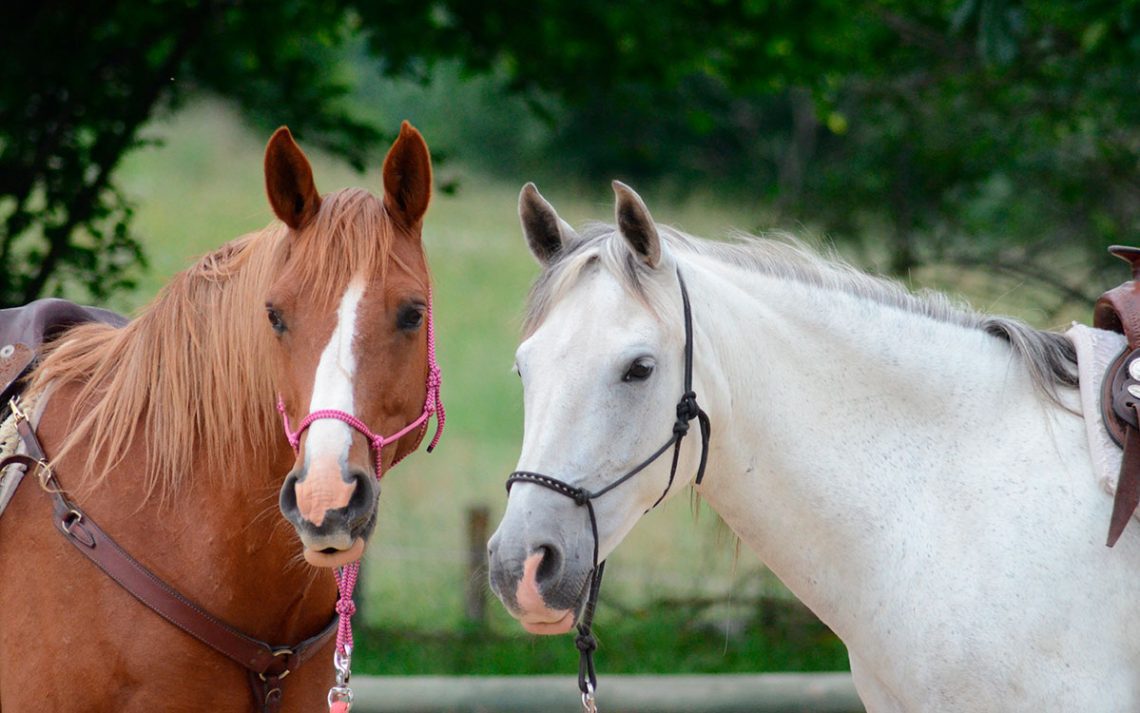
Point of View: On Leadership in Human-Horse Relationships
Point of View: On Leadership in Human-Horse Relationships
Any work with a horse will be most effective if the horse sees you as a leader – he will follow you, respect you, trust you, feel safe next to you, will be willing to work and cooperate.
If you do not like the words “leader” and “leadership”, then you can replace the word “leadership” with “respectful partnership”, “leader” with “teacher” or “partner”. The essence of this will not change – words are only symbols for the definition of a particular phenomenon.
The words I use and the concepts I describe in this article are only meant to create awareness of the reality that horses live in.
Concepts create awareness
I want to talk about the horse model of the world so that we can use it to explain the horse’s natural way of life and its needs that arise when it is around people. Since there are still people who do not know that a horse is a herd animal and keep it in isolation, leave it in a stall for 23 hours, devoting only an hour to work, it is important to share concepts in order to create awareness for the benefit of the horse. Since there are still people who have horses who are allowed so much that it borders on danger, it is important to share information. Since I have met many riders who want to improve their skills, but are not able to walk alongside their out-of-control horses, it is necessary to give the concept of a clear and understandable model of the horse’s world.
Below I will address various aspects of “leadership” and “dominance”, but there is always at least one exception to each concept, there are always small nuances, there are always situations where the concept cannot be applied. The material is not complete – scientists produce new ideas every day, discover new nuances and exceptions. So if someone says that the concept is wrong or slightly different, I agree! Reality (territory) is much more complex and cannot be expressed in a model (map). However, we need to start with some concepts from which we can go further into the details!
Leadership
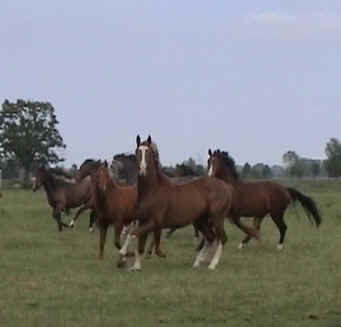
By nature, horses instinctively seek leadership. Leadership involves choosing the direction for the group and providing security for all its members. Lead horses are usually calm, stable and wise. The leader may be the older mare, she helps maintain security and can lead the herd to food. She is highly respected by other horses for her wisdom, experience, leadership and safety. Her calculated decisions, whether traveling for food and water or dealing with an emergency, literally draw the line between survival and death.
Many people think that the stallion is in the “alpha” position, but in fact he is more like a “group coordinator”, since he “owns” the herd. Its role is to keep the herd together and keep predators and enemies at bay.
dominance (dominance)
In the herd, the horse lives in a hierarchical structure, where each individual has his place. This brings clarity and peace to the group. But the position in the hierarchy can change when circumstances change. Therefore, when all the horses are very hungry, one hierarchy may be visible, but when the horses are satiated, its order may be completely different.
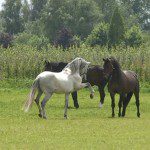
Many people think that the stallion is the dominant horse in the herd, but if there are several dominant mares, he can be number 3 or 4 in the pecking order. This becomes apparent when there is only a small body of drinking water available. The horse with the highest ranking drinks first, then the second, then the stallion, and then 4,5,6,7,8,
Dominance has very little to do with strength and power. Usually the wiser, older mare is the most dominant horse in the herd without being the strongest! Small Shetland ponies can control a large horse as they are more confident and assertive.
Thus, dominance has nothing to do with size or gender, and also has nothing to do with aggression in the equine world – aggression would create fear and confusion, which would make the herd unstable and vulnerable. A dominant horse will only be dominant because other horses feel dependent on it for security. That is why they will never stand in the way of this horse or try to injure it.
Random dominance and leadership
When a horse that is not dominant in the herd is dealing with a non-leading person, it will begin to try to become dominant and even become a leader.
In the absence of a clear leader, a horse, even a submissive, naturally submissive one, will tend to fill what it sees as a vacant leadership role. It’s called Random Dominance and Leadership.
This dominance and leadership can lead to stress and behavioral problems because:
- the horse will lack the sense of security created by the senior in rank;
- to be a real leader you need mental (innate) skills;
- to carry out the duties associated with a leading role, certain qualities are needed;
- stress can manifest itself in fear and aggression, and this can cause a lot of problems. Aggression is also often misinterpreted as if the horse is a true leader.
Behavior problems
If the horse does not trust “his man”, does not see him as a strong, calm, persistent and consistent leader of the herd, he becomes incomprehensible to his role in this herd of two individuals.
A horse that is embarrassed that it cannot find a leader to take charge of it is actually concerned about the survival ability of the herd, so it tries to fill in the missing leadership elements, often in a haphazard manner. This may lead to:
- aggression;
- anxiety, fear;
- disappointment;
- trying to push you to literally take your place.
Remember that in their natural world, animals even attack instability.
Confusion, uncertainty, inconsistency, and irregular owner leadership can be perceived by the horse as instability.
Remember: the most confusing thing for a horse is not knowing when he can lead, and who to obey him.
Horses that live in a constant state of confusion, fear, or aggression are unbalanced and often the product of a lack of human guidance. I have seen this many times. The horse often gets a calmer heartbeat when I offer clear, calm, genuine leadership.
So take the early signs of problems like aggression seriously. Aggression is a symptom of an unsatisfied horse; a horse whose life is not complete. Horses become aggressive due to lack of leadership and begin to dominate.
By being a good leader, you can help your frustrated and confused horse and turn it into a balanced animal! We must copy the essential qualities of the “lead mare” and “group coordinator” by emulating their roles.
Balanced horse
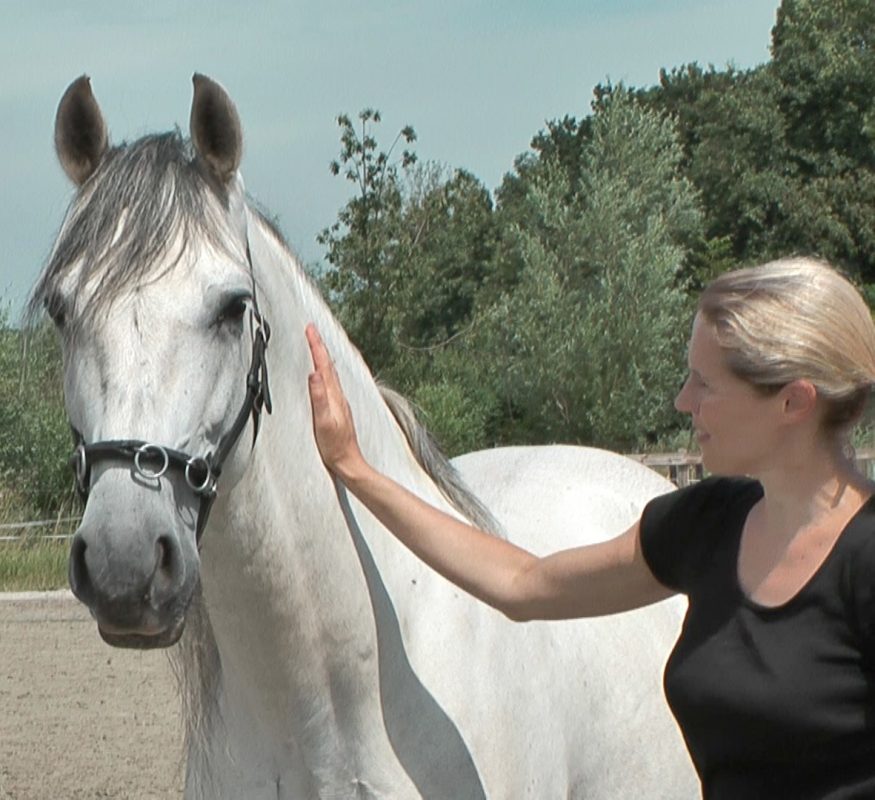
A balanced horse is laid-back and calm, benevolent and friendly. Her life is filled in several areas:
- physically – thanks to gymnastic exercises that make her body balanced;
- mentally – thanks to clear boundaries and rules set by a dominant but gentle and respectful person to ensure safety and clear communication;
- emotionally – thanks to the strong positive bonds that are formed with a person and other horses;
- spiritually – because her human leader never humiliates her dignity and always helps her feel confident.
The signs of a balanced horse are:
- relaxed and confident posture;
- a calm and focused mental state and an almost instinctive response to the coach’s requests;
- the horse shows joy at your arrival, is calm during work, feels safe. She shows no signs of stress or frustration;
- the horse does not close and does not work like a robot, it is open and expresses itself intelligently.
How it behaves horse that goes too far?
Her behavior is eloquent:
- If she pushes, steps on you, and ignores you when you are standing next to her, she is dominant (by chance).
- If you hold your horse and he starts to move, pulls you, then he is the leader, because in the wild it is the leader who decides when it is time to move.
- If your horse is frightened, you look at it, and at the same time it looks around, the roles have changed – now it is in charge of the situation (in the wild, leaders look around, and followers watch the reaction of the leader, who ensures safety).
- If you are holding your horse on a lead and talking to someone else, and your horse steps forward towards you, you respond by stepping back to keep your distance… it’s 1-0 in your horse’s favor, and the role reversal has gone unnoticed.
- If you arrive at the tournament venue, and your horse, just getting out of the horse carrier, pulled you onto the grass and began to graze, then he is the leader, because in the wild the leader of the herd decides when it’s time to eat!
- If she threatens or wants to bite or hit you, she is dominant.
- If the horse determines the direction and gait, and it is he who decides where to go and how fast, he checks if he is the leader.
I want to tell about 14 Ways to Establish and Confirm Leadership.
1.Claim your space! In nature, horses require others to maintain distance, respect personal space, assert themselves in a calm and confident manner, and then communicate through body language and eye contact. A horse that understands that you, as the leader of the herd, own the space in which it lives will respect your asserted authority.
Protecting your space should become second nature to you! You must imprint this habit in the subconscious. You can be distracted, talking with a friend, but keep your position and the position of the horse.
This process does not begin upon arrival at the arena, it must not stop. For your space, being next to the horse, you need to monitor constantly! Your horse should never encroach on your space, even while grooming, saddling, transitioning to the paddock, out of the paddock, etc. The more consistent you are, the better.
2. Move like a leader! Straighten up, straighten your shoulders and raise your head.
3.Position matters! When you lead a horse on a lead, it should not go too far ahead and definitely should not pull on the lead. When you lead, the horse may perceive you as a leader. But it could also be that the horse takes up a position from behind, like a pursuer! So who is leading whom? Walking shoulder to shoulder often puts you in a colt position. But with dominant horses, this is the ideal position. Whatever position you choose, let the horse know that you have a consistent picture of what is happening and that you expect him to follow you when you are in that position.
4. Watch your neighborhood! It is important that you, as a trainer, always keep an eye on the environment. Make sure you stand between the danger and the horse. If you show fear around an insecure horse, you show weaker energy than he does. This gives her the right to control you. Breathe calmly and let the horse feel that you are protecting him and that you are in control of the situation.
5.You must have a plan! Some riders take their horses to the arena or take them somewhere without knowing what they want to do or where they want to go with the horse. In such a situation, the horse can easily take the lead. So plan ahead so you know exactly where you want to go. When you practice, know how many circles you want to do to the left, how many to the right, and so on. Change direction often if your horse doesn’t want to concentrate or isn’t concentrating enough. This ensures that you show leadership.
6. Don’t stop leading at the end of your workout! Ask your horse to wait patiently while you remove your helmet and unsaddle him. Remember: leadership does not begin or end in the arena. You cannot NOT communicate, and in communication you cannot NOT lead.
7. Reward only positive, balanced behavior! Avoid instilling fears or an unbalanced morale in the horse. Do not reinforce or encourage fear and aggression! Pet, caress and reward the horse only when he is calm and relaxed and when he is submissive/ready/desired/focused.
8. Set the rules! Like herd animals, horses look to the leader as the one who sets the rules in the herd. If you don’t, the horse will take the lead.
9. Be consistent! Give your horse clear messages – be consistent while following the rules. The lead mare is very consistent, A is always A and B is B. We humans are sometimes a lot less consistent. Sometimes A is A, but tomorrow A is B. One day we asked the horse to wait patiently for a carrot, but the next day we let him rummage through our pocket because we were too tired to protest. The day after we decide to be more consistent again… Don’t expect your horse to follow rules that aren’t strictly followed. Inconsistent leadership leads to an inconsistently obedient horse and an unbalanced, unbalanced mind.
10. Be a balanced leader! Horses want the leader to create stability in the herd. Horses do not follow unstable leaders. Frustration, fear, anger or anxiety will only increase the unwanted behavior of an out of control and unbalanced horse. Understanding and projecting the leader’s calm and dominant energy creates a positive and strong bond with your horse.
11. Know yourself! You cannot create balance without self-knowledge, and you cannot achieve leadership without balance. If you are a balanced leader, happy and successful relationships will come naturally.
12. Use aggressive energy! If your horse is misbehaving, don’t react with aggression or frustration – use calm but assertive energy. If the mare sees something she doesn’t like, she will stop her foal, moving him out of the way in a calm but dominant manner. Never discipline your horse out of frustration or anger. Think of one of your favorite high school teachers as you set clear boundaries. Dominance is not an ugly word, it is a feeling of skillful control over a situation.
13. Stay in the lead! You cannot be a leader just for a while. Lead mares never waver in their leadership role and you should do the same! Remember: leadership does not begin or end in the arena. You cannot NOT lead.
14. Use multiple leadership styles! When training a horse, you can use the commanding style, the coaching style, and the passing style. Good horse trainers use all three styles.
We are all different, and each builds his relationship with the horse in his own way, choosing his own style of leadership – the way and approach to ensure the achievement of the goal and choice of direction in the training of the horse.
I highlight three main leadership styles:
1. Order.
2. Coaching.
3. Transfer of leadership.
Experienced trainers can use all three styles, but many people tend to stick with just one.
1. Mandatory style
With this style, you are telling your horse what to do and how to do it.
Only you determine the goal and direction, decide what, how, why, when and where the horse should do (perform a task or exercise).
“Command” style is more like a monologue – only you express your thoughts and desires. It works great in a number of situations.
I will list some of the suitable conditions for its use:
- When you set boundaries and limits between you and the horse in a positive way. The horse needs to know that you are clearly setting the rules for your existence together so that both you and the horse feel safe and comfortable.
- When a horse is learning a new thing, exercise or signal. It is important that the leader be a competent and good teacher and be able to motivate the horse to learn a new skill.
- When you have to protect your “herd of two”, in case of a dangerous situation or an emergency.
The command style is sometimes called “authoritarian”, but it has nothing to do with dictatorship.
Unfortunately, many people who use it often act in a negative, overbearing manner, showing superiority over horses. Some of them tend to think of this style as a “force” rather than “order” mechanism. They force the horse to do something by threatening and abusing their power. And now, the style is no longer commanding, but rather offensive and unprofessional. A person who embarks on this path ceases to be a real leader and teacher. The negative coloration makes it the “boss” for the horse.
Positive leaders value the horse’s efforts, use rewards to motivate and reinforce desired behaviors, neglect what they don’t like, and try to avoid violence and penalties. They know that punishment is acceptable, but try to avoid it for as long as possible or apply it very carefully because of its high cost (lowering the horse’s mood).
Leaders who use the command style are sometimes more goal oriented, result oriented, rather than horse oriented.
If you want your horse to be obedient without becoming a well-trained robot, if you want your horse to have more confidence and motivation, then you should be guided by the “coaching” style.
2. Coaching style
You set goals, yet encourage healthy dialogue to facilitate the exchange of ideas.
A necessary condition for such leadership is mutual respect between the horse and the person. The style of coaching is more attractive than the commanding one, but it must be remembered that, despite the opportunity for dialogue, you, as a leader, must maintain your authority and be responsible for making final decisions.
This is a useful style if your horse is experienced, capable, calm, confident and knows his job.
A good trainer develops the horse’s competence and purpose so that it is self-motivated and not dependent on the leader (his tools and controls).
Imagine: you can make a wonderful piaffe when the horse is wearing a bridle. Using the coaching style, by removing it, you can check if wants whether your horse does the piaffe with you or you encourage him to do it.
You can check, wants whether your horse bend over on the inside side or you force bend her.
What we are aiming for is the “desire” of the horse, not “obedience”. Working in the wild, you can find out if your idea has been accepted by your horse.
The leader who chooses the coaching style supports the ideas of the horse: if he becomes stronger, more experienced and one day offers you something special (for example, levada or ter-a-ter), you encourage this idea.
The coaching style can be used when you want to increase the horse’s readiness and self-motivation; if you like to share responsibilities, you welcome situations where the horse takes responsibility for gait, direction, frame, carries himself. It will help you if you are looking for minimal use of controls or tools and want to find out how your horse is responding to your internal thoughts, feelings, energy and body language. It is this style that is aimed at improving the team spirit in your couple.
The coaching style is horse-centered. You must be attentive and take care of the needs of the horse, putting them first. The position of the leader must be positive. The leader must pay attention to evaluating the efforts of the horse, motivate and encourage him.
This style shows respect for the horse, as it implies care for it. Caring leaders are much more successful in competition and much more satisfied with their work with horses than problem oriented leaders. At the same time, being attentive to the needs of the horse does not mean that the leader should have a less structured approach or work without a goal or plan.
3. Transfer of leadership
The leader allows the horse to make decisions, but retains ultimate responsibility.
The “transmission” style is more like a monologue, where the horse expresses his ideas and desires. It can improve or destroy the relationship between a horse and a person.
A person can unconsciously adhere to it, not being a pronounced leader in itself, and therefore the horse takes the initiative, to take the vacant place. This can lead to stress and behavioral problems and lead to dangerous situations, as the horse stops paying attention to the person, his ideas become paramount.
However, this style can be used consciously, especially in cases where a person uses the “mandatory” style too often. Authoritarian leaders spend most of their time with the horse because they want it to do things, they make demands. This can make the horse depressed, reserved, timid, shy, tense, or completely closed. The passing style improves the relationship between man and horse, because the man learns to spend time with the horse without expecting anything from him, learns not to want to do something all the time, but just to be with the horse, to follow his ideas. As a result, the horse can change its negative perception of the person for the better and open up to him.
This style can be used consciously if you feel the horse tense up while learning a new exercise. Simply follow or become a “shadow” of your horse’s breath, rhythm and speed until you feel him relax and then you can continue the learning process.
The extreme manifestation of this style is never to ask or demand anything from the horse. However, it is hardly possible in practice – we have too many ideas and decisions regarding it (what the horse should eat, where to live, how to care for it, trim, treat, etc.).
If you really prefer not to lead your horse at all, let him live in the herd, keep a good distance from him and enjoy watching.
Effective leadership
There is no “best” leadership style. Different People, Horses, and Situations Require Different Leadership Styles
The most successful leaders are those who adapt their leadership style to the personality of each individual horse.
That being said, effective leadership varies not only from horse to horse, but also depending on the exercises, tasks or work that needs to be done.
Good leaders are constantly observing and learning, combining styles as needed.
When you teach a horse something new, you use the command style, but if you feel like he needs a break to digest what he has just learned, pause and use the coaching style. Remind yourself of the two-way communication and allow the horse to express his feelings (by chewing and licking his lips, lowering or shaking his head, blinking), wait until he is ready to “turn on” again (the horse is looking at you, his ears are pointing forward). If the horse is on the move, you continue to use the command style and give him a new direction. When you find that the horse is tense, you can switch to the “pass” style, following his breathing and rhythm, and this will reduce the level of pressure on the animal.
If you are using the hand-over style while you are grazing a horse on a lead/lunge and the horse starts pulling you disrespectfully, you can instantly switch to the command style, reminding the horse of rules and boundaries.
If your horse is constantly using the “passing” style, ignoring you, stepping on your feet, acting impulsively, nervously or aggressively, you should switch to the “commanding” style. Your clear guidance in this style will teach her rules and boundaries while ensuring your overall safety. When the horse feels safe and comfortable, respects and trusts you, you can switch to the “coaching” style.
Are you using the “coaching” style in the wild, but does your horse get confused or misunderstood or drop out during dialogue? You can switch to a “telling” style and explain to her what you mean. At the end of the session, you can switch to the “transfer” style and, for example, let her ride on the ground after work.
If you’re using the command style too authoritatively and feel like the horse is mentally walking away, you can switch to the hand-over style to find out what’s going on. If the reaction from the horse is “Come on, goodbye!”, you will need to change your approach and use more of the “coaching” style. If the horse is difficult to mentally tune in to you, you can use the handover style to improve your relationship with him.
You can teach your horse a new exercise in command style and using tools (cords, cavesson, bridle and reins). And you can test her desire and motivation by putting away the tools and using the “coaching style” on the loose.
Every time you work with a horse, you must examine yourself, the horse and the situation and adapt your leadership style accordingly.
Remember!
Nature tells the horse that someone needs to take control! If you don’t, your horse will.
There are only two roles for horses in a relationship: leader and follower/dominant and submissive. (If you like, you can refer to these roles as trainer and trainee, teacher and student.)
Be a leader/teacher/coach! Leadership/guidance is the key to a healthy horse-human relationship.
You cannot be too young or too old to be a good leader/teacher/coach!
Leadership / leadership – XNUMX/XNUMX on duty. Don’t sleep on duty!
Maraica de Jong.
Translation by Valeria Smirnova based on site materials http://straightnesstraining.com.




